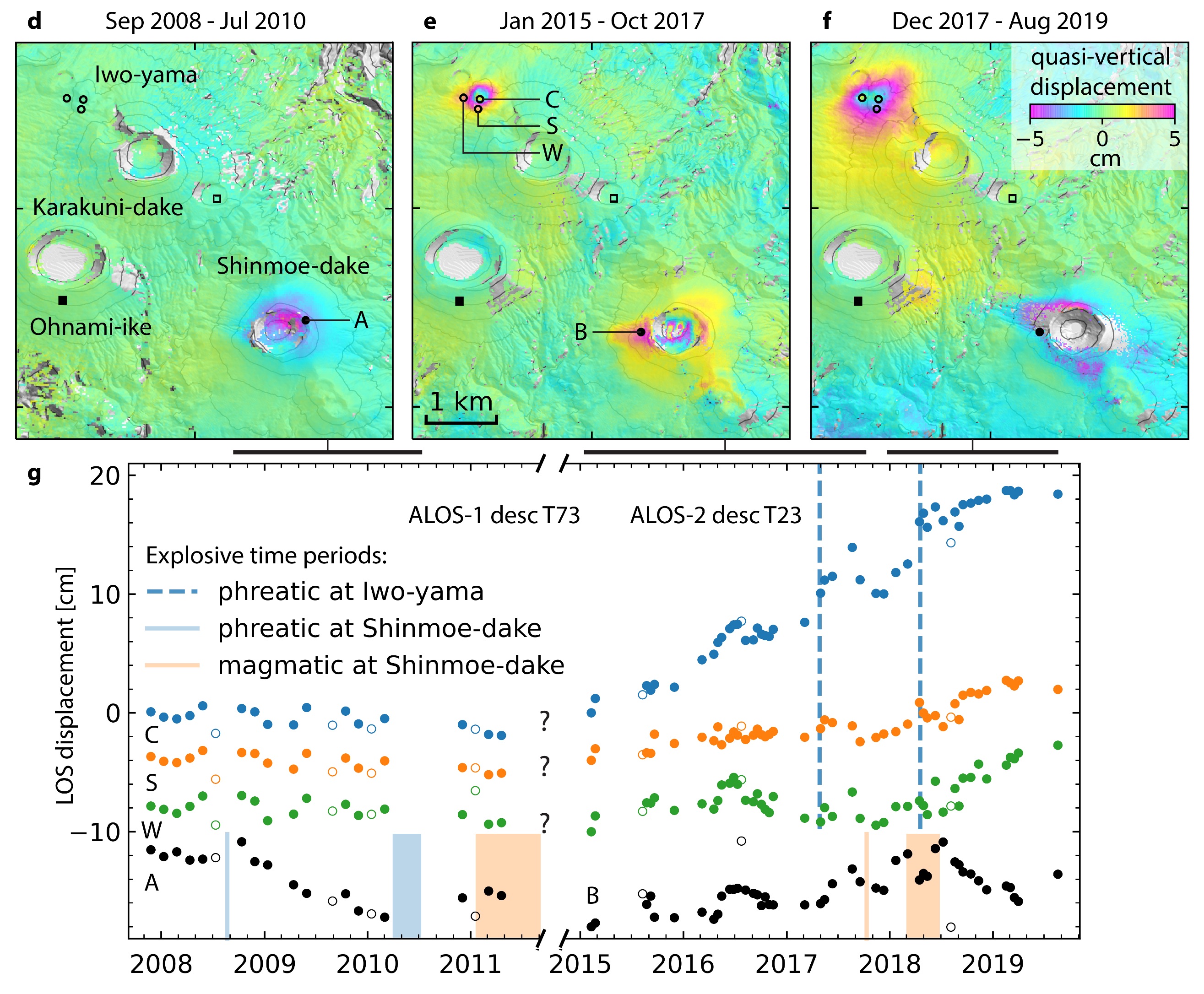Active Volcanism
Hydrothermal System of Kirishima Volcanic Complex in Kyushu, Japan
The Kirishima volcanic complex hosts a widely distributed hydrothermal system in the shallow levels. Combining geodetic, geoelectric, geochemical, and petrological analysis, we find that Shinmoe-dake’s hydrothermal system deflated during the 2008–2010 eruptions, then was replaced by a magmatic body during the 2011 eruption; while at Iwo-yama crater on the north, the persistent inflation around the crater during 2014–2019 is driven by liquid–gas two-phase water boiling; and the precursory expansion of its southern and western vents after December 2017 is driven by the upward migration of magmatic fluid. Check more details at our GRL paper (Yunjun et al., 2021).

Lava Dome Mapping via InSAR time series analysis
Have you wondered what to do with the estimated DEM error from InSAR time series analysis? It can map the lava dome! We tested this on the Shinmoe-dake crater within the Kirishima volcanic complex, and validated our results against the SAR intensity simulation approach (Ozawa & Kozono, 2013) and the single-pass SAR interferometry approach (Shimono et al., 2011). Check more details at our GRL paper (Yunjun et al., 2021).

Interconnectivity Between Aira and Kirishima Magmatic Systems
It is not known whether clustered or aligned volcanic edifices at the Earth surface have connected magmatic systems at depth. Here we use GNSS time-series and deformation modeling to show how Aira caldera and Kirishima, two adjacent volcanic centers in Kagoshima graben (southern Japan), interacted during Kirishima unrest in 2011. Check more details at Brothelande et al. (2018).
